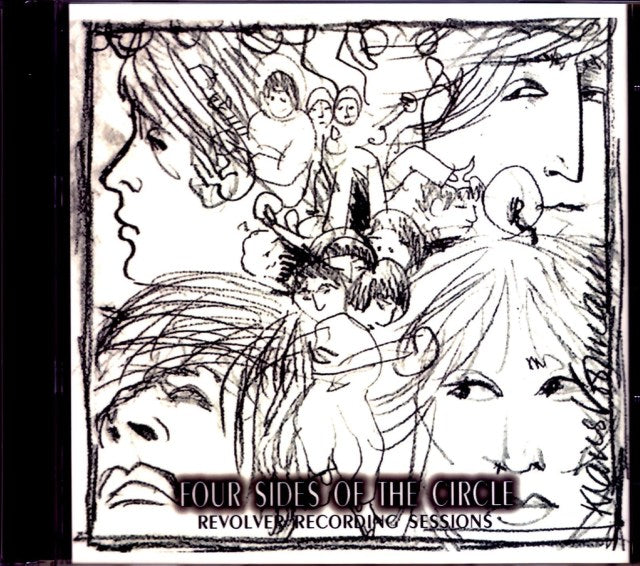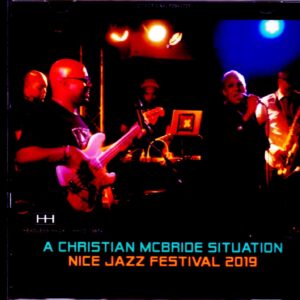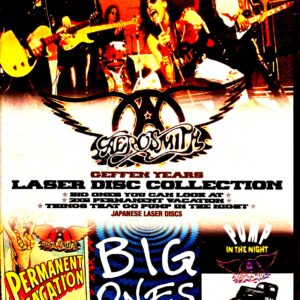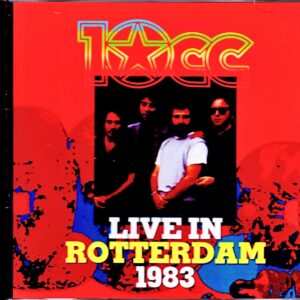Description
The Beatles’ “Revolver” was a new era album that distinguished itself from previous albums. The Beatles’ musicality, which was an extension of the oldies of the 1950s, still had remnants of that up until around “Beatles for Sale,” and the public treated them as idols. In fact, “Help” was given the Japanese title “Four People Are Idols.” However, the high level of artistry glimpsed in “Help” was deepened in “Rubber Soul,” showing that the Beatles were becoming more than just idols. Until then, they had been touring in parallel with recording, but after stopping touring in 1966, they brought together the best of their studio work to create “Sgt. Pepper’s.” This album was highly praised both at home and abroad, and it is believed that “Revolver” was the catalyst for its production. Indeed, there are reasons for the timing, but not a single song from “Revolver” was performed on stage, and many of the songs would be difficult to reproduce on stage with the technology of the time. The only recording from the same period, “Paperback Writer,” was released as a single, and was only performed on the 1966 tour. The flip side of the album, “Rain,” was played using the reverse rotation of the tape, which was impossible to perform on stage. The Beatles must have felt the joy and fun of studio production with “Revolver.” They must have thought that if they had taken more time, they could have made a denser album. This led to the later cessation of touring activities and the formation of Sgt. Pepper’s. “Revolver” is an album from a period when the band made albums in parallel with touring and in the studio. This album contains outtakes and various versions of the album. [FOR NO ONE] This is a masterpiece that John said was his favorite Paul song, along with “Here There And Everywhere.” It may not have been possible to spend time on this song in a session with all the members, but since this song was basically recorded by Paul alone on the piano, the album shows him taking the song over and over again. The May 9th session has layered piano phrases that are the core of the song from take 1 to take 9. Since it is only piano and drums, it seems that only Paul and Ringo are in the studio. Take 10 was the one that was finally used. In track 11, you can hear Paul’s raw vocals without any processing. The impressive French horn has not yet been added, and it is a very simple Paul playing and singing. The French horn is included in this work in two versions, the rejected version and the adopted version. [DOCTOR ROBERT] It is said that this song is about the doctor who prescribed John’s drugs. It is a classic Beatles song with John’s vocals racing over a fierce guitar riff and Paul’s chorus chasing after him. The song itself may be mediocre, but the breathless part in the middle gives the song a sense of contrast and makes it a masterpiece. Track 16 has a part that is not included in the released version at the end, and the ending of the song is also interesting. They hadn’t yet decided how to end the song, and the discussion was left vague, with John saying “OK…” to the band members. [I WANT TO TELL YOU] This song was chosen as the opening number for George’s Japan tour in 1991. It was sung as “WANNA” during live performances. Track 19 is a short clip showing the recording of this song in the studio. [GOT TO GET YOU INTO MY LIFE] This song features a flashy horn section, and Paul liked to play it on his solo tours, including his time with Wings, and especially used it as the opening song on his 1979 tour. This song is the pioneer of brass rock, which later took the US by storm. Take 5 is a simple working version that was also included in the anthology, and it includes lyrics that were not in the final version, and there are differences in the song structure. Of particular note is the alternate vocal recorded on June 20th. It is impressive to see Paul singing lively at a faster tempo than the final version. Another vocal, recorded on June 22nd, is quite close to the final version. [TOMORROW NEVER KNOWS] The last song on the album is John’s “Tomorrow Never Knows,” which is exactly the word chaos. John’s extremely processed vocals, a number of sound effects, and sound effects using tape reverse rotation, all of which are songs that embody the pioneering nature of the Beatles, filled with John’s worldview that Paul could not achieve. It is amazing how quickly the Beatles grew from the time they played oldies-style rock and roll to this state of mind in just a few years. In take 1, John sings calmly with vocal effects that sound like they are heard on an AM radio, along with monotonous chords. It is a singing style that intentionally suppresses intonation. Take 3, recorded on April 27th, has no effects on John’s vocals, and has the feel of live singing. Sound effects close to the final version were added at this point. It can be said that it plays the role of a trailer that foreshadows the next Sgt. Pepper’s. [ALTERNATE MIXES & WORLDWIDE VARIATIONS] The Beatles albums were released at a gradual pace, and it is known that there are many different mixes in different countries around the world. One famous example is “Tomorrow Never Knows” from UK MATRIX 1, which can be said to be a completely different song. This is the last disc that collects the different mixes of the albums from around the world. Listening to them side by side like this, you will be surprised at how different the same song can be. [FOUR SIDES OF THE CIRCLE] As you can see from the recording date, the album “REVOLVER” was already completed at the time of the Japan performance at the end of June 1966. However, because of the use of complex studio effects, only one song, “Paperback Writer”, which was released as a single, was actually performed on stage. The fact that Paul played on stage after going solo in later years is largely due to the development of equipment, but not only that, but the fact that Paul played all the songs on this album at his solo concerts proves that this was the period when Paul’s talent was at its peak. The album artwork was also a trial and error process, and initially a circular collage of photos of each Beatle member was considered, and titles such as “FOUR SIDES OF THE CIRCLE” (four sides of a circle) and “ABRACADABRA” were considered, which evoked the image of chaos. Even after recording was completed, the album title was still hard to decide on, and there is an urban legend that it was inspired by the revolver carried by the police officers guarding the band during their Japan tour. In the end, the album jacket was designed by Klaus Boorman, an old friend of the band. The result was so good that they would later ask him to do the artwork for “Anthology” again. This work is the culmination of the studio sessions for “REVOLVER”. ■The ultimate set, including many never-before-released recordings. ■Longer than previously released, including some that will be recorded for the first time unedited. DISC ONE [FOR NO ONE] May 9, 1966 MONITOR MIXES 01. Rehearsal 02. Take 1 03. Take 2 04. Take 7 05. Take 8 06. Take 9 May 16, 1966 07. Take 10 SI #1 (monitor mix #1) 08. Take 10 SI #2 (monitor mix #2) 09. Take 10 SI (monitor mix #3) 10. Take 10 SI (composite monitor mix) 11. Take 10 SI Clavichord track 12. Take 10 SI Vocal track May 19, 1966 13. Take 14 SI Alternate Horn (monitor mix) 14. Take 14 SI French Horn MULTITRACK 15. Take 10 backing track [DOCTOR ROBERT】 May 12, 1966 16. RM4 for the US 17. Acetate Test Mix May 20, 1966 18. RS1 for the US 【I WANT TO TELL YOU】 June 2, 1966 19. Pre-Take 1 (partial) June 3, 1966 20. RS from Take 4 (full intro) 【GOT TO GET YOU INTO MY LIFE】 7, 1966 21. Take 5 May 18, 1966 22. Tape reduction Take 9 CHANNEL MIXES 23. Take 8 partial from 5.1 mix 24. Take 8 with SI (Left Channel/mono) 25. Brass SI #1 partial from 5.1 26. Brass SI #2 partial from 5.1 27. Second Vocal SI partial from 5.1 28. Take 9 SI June 20, 1966 29. RM8 different vocal at end June 22, 1966 30. RS1 different vocal at end EXTRAS 31. RM & RS End comparison JULY, 1966 CLIFF BENNET AND THE REBEL ROUSERS SESSION 32. Paul on Piano and Producer 【TOMORROW NEVER KNOWS】 April 6, 6 33. Take 1 alternate intro 34. Take 1 April 27, 1966 35. Take 3 RM8 Mono Matrix II June 6, 1966 36. Take 3 RM11 Mono Matrix I June 8, 1966 37. Acetate Test RM11 June 22, 1966 38. Take 3 RS6 MULTITRACKS 39. Take 1 ) 40. Take 3 (full end) (mixing desk) 41. Take 3 monitor mix 42. George Martin explains DISC TWO ALTERNATE MIXES & WORLDWIDE VARIATIONS [PAPERBACK WRITER] 01. 1966 Japanese EP Duophonic 02. 1970 US ‘Hey Jude’ LP Stereo reversed 03. 1979 unreleased US ‘Collector’s Items’ LP Stereo 04 1982 UK ‘20 Greatest Hits’ LP Stereo Center 05. 1983 UK ‘Abbey Road Show’ John Barrett Stereo 06. 1996 ‘Anthology’ Video Mix Stereo 07. 2001 ‘Beatles 1’ Video mix Stereo 08. 2009 ‘Rockband’ mix [RAIN] 09. 1983 UK ‘Abbey Road Show’ John Barrett Stereo 10. 1996/2003 ‘Anthology’ Video Mix Stereo 11. 1996 ‘Anthology’ Laserdisc Stereo [TAXMAN] 12. 1966 French ‘Revolver’ LP Mono clean intro 13. 1966 French ‘Revolver’ LP Stereo clean intro 14. 1966 Mexican ‘Revolver’ LP Mono clean intro 15. 1976 US “Rock ‘N’ Roll Music” LP Stereo reversed 16. 2009 ‘Rockband’ mix [ELEANOR RIGBY] 17. 1968 ‘YS Film’ Stereo 18. 1987 ‘YS Film’ Laserdisc Stereo [I’M ONLY SLEEPING] 19. 1966 French EP Mono slightly dif EQ 20. 1966 US “Yesterday and Today” LP Duophonic [ LOVE YOU TOO】 21. 2011 “LITMW” Video Stereo 22. 2011 5.1 separation 【HERE, THERE AND EVERYWHERE】 23. 1977 “Love Songs” LP Stereo reversed 24. 1980 “Ballads” LP Stereo 【YELLOW SUBMARINE】 25. 1968′ YS Film’ Stereo 26. 1982 UK ’20 Greatest Hits’ LP Stereo 27. 2009 “Rockband” mix [AND YOUR BIRD CAN SING] 28. 1996 US “Yesterday and Today” LP Duophonic 29. 2009 “Rockband” mix [FOR NO ONE] 30. 1977 “Love Songs” LP Stereo reversed [DR. ROBERT】 31. 1996 US “Yesterday and Today” LP Duophonic 【GOT TO GET YOU INTO MY LIFE】 32. 1976 US “Rock ‘N’ Roll Music” LP Stereo reversed 33. 1976 Single Stereo with echo






Reviews
There are no reviews yet.